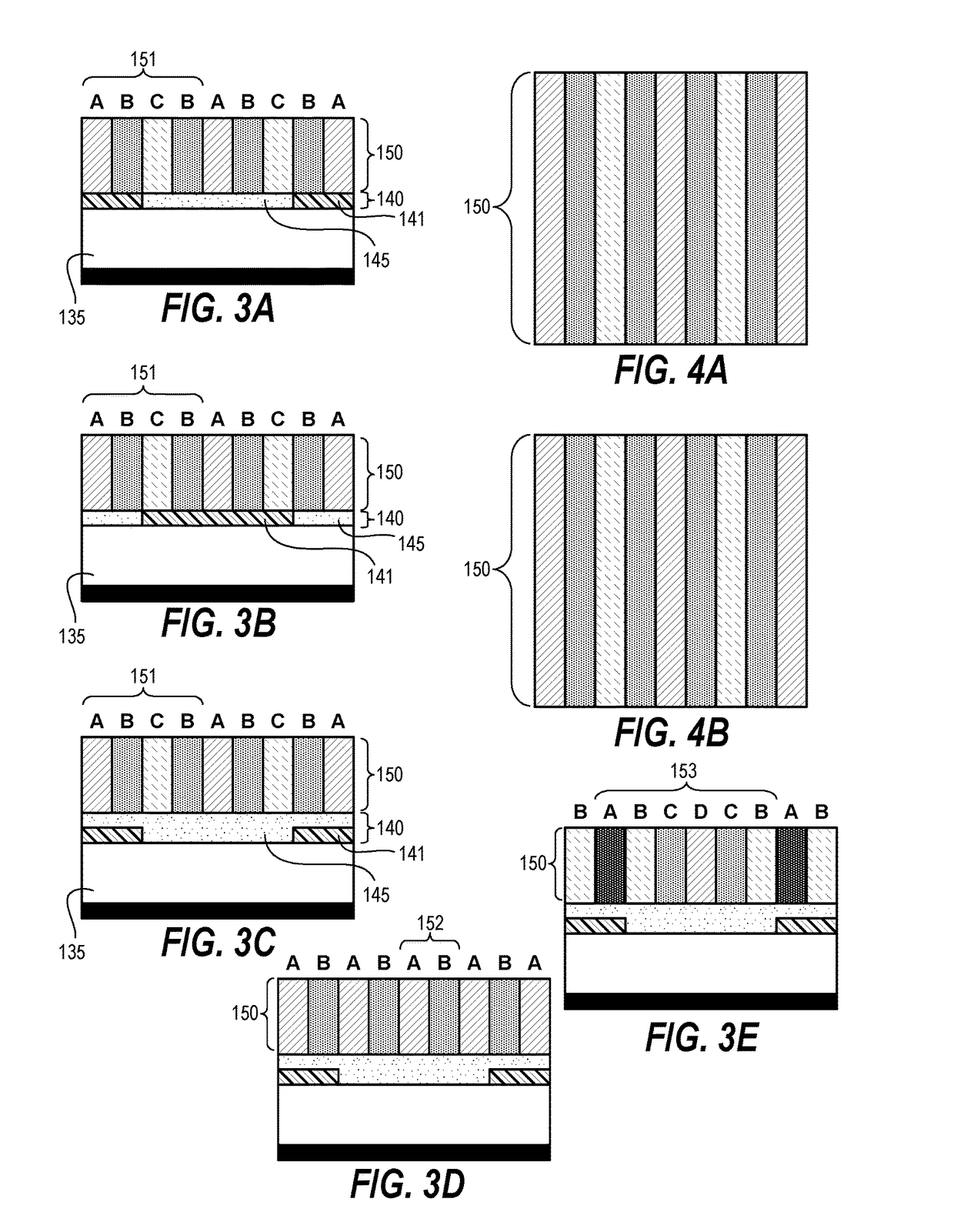Methods of Forming Etch Masks for Sub-Resolution Substrate Patterning
a technology of sub-resolution substrates and masks, applied in photomechanical treatment, instruments, electrical equipment, etc., can solve the problems of limiting the pitch or spacing between exposed features, conventional patterning techniques suffer from poor resolution or rough surface of etched features, conventional techniques cannot provide a level of uniformity and fidelity, etc., to achieve the effect of expanding the capabilities of photolithography
- Summary
- Abstract
- Description
- Claims
- Application Information
AI Technical Summary
Benefits of technology
Problems solved by technology
Method used
Image
Examples
Embodiment Construction
[0025]Techniques disclosed herein, provide a method and fabrication structure for pitch reduction (increasing pitch / feature density) for creating high-resolution features and also for cutting on pitch of sub-resolution features. Techniques include using multiple materials having different etch characteristics to selectively etch features and create cuts or blocks where specified. A hardmask is positioned first on an underlying layer or layers to be etched. Then a pattern of alternating materials is formed on the hardmask. One or more of the alternating materials can be preferentially removed relative to other materials to uncover a portion of the hardmask. The hardmask and the remaining lines of alternating material then form a combined etch mask defining sub-resolution features. Various patterns of materials can be formed on the hardmask, and patterns can include two, three, four, five, or more different materials. Patterns can include having half pitches below 40 nanometers and ev...
PUM
 Login to View More
Login to View More Abstract
Description
Claims
Application Information
 Login to View More
Login to View More - R&D
- Intellectual Property
- Life Sciences
- Materials
- Tech Scout
- Unparalleled Data Quality
- Higher Quality Content
- 60% Fewer Hallucinations
Browse by: Latest US Patents, China's latest patents, Technical Efficacy Thesaurus, Application Domain, Technology Topic, Popular Technical Reports.
© 2025 PatSnap. All rights reserved.Legal|Privacy policy|Modern Slavery Act Transparency Statement|Sitemap|About US| Contact US: help@patsnap.com



